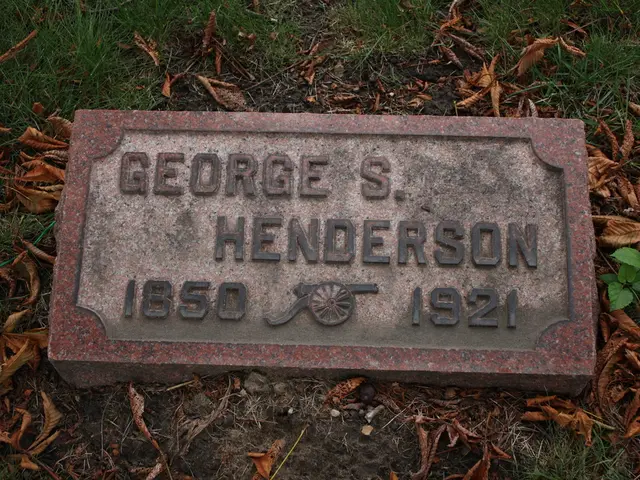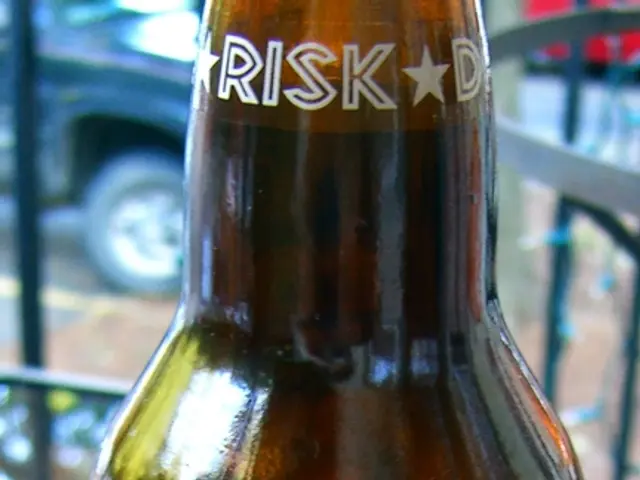Energy drink-infused nicotine pouches explained: Essential info on caffeine pouches
In recent years, there has been a significant increase in the public's acceptance and use of caffeine pouches, small, flavoured packets that deliver a concentrated dose of caffeine when placed between the lip and gum. This trend, however, has raised concerns among health professionals, particularly for teenagers.
One of the primary worries is the lower safe consumption threshold for teenagers. Given that teenagers are typically smaller and lighter than adults, their safe caffeine limits are significantly lower. The American Academy of Pediatrics (AAP) strongly advises against caffeine consumption in children and teenagers, not only to avoid toxicity but also to prevent high caffeine use, which often indicates insufficient sleep and cannot be replaced by caffeine[1].
Research indicates that teenagers consuming over 100 mg of caffeine during a school day are more prone to difficulties with self-control and behavioural problems, which can negatively impact academic and social performance[1]. Additionally, the routinely placing of caffeine pouches between lips and gums may cause gum recession and other dental issues, as this exposure to a foreign substance in the mouth for extended periods is not considered a healthy delivery method for caffeine consumption[1].
Furthermore, caffeine pouches may deliver caffeine faster than traditional sources like coffee, increasing the risk of rapid overdose, especially since these products are often unregulated and heavily marketed to youth[3]. This lack of regulation means that the safety and caffeine content of these products are uncertain, elevating the risk for unintended high doses and adverse effects[1][3].
Despite the relative rarity of caffeine pouch usage among teens, the products are gaining popularity and visibility through social media marketing targeting younger audiences, raising concerns about increased uptake and associated health risks[2][4]. For instance, David Gomez, a school resource officer in Boise County, Idaho, has noticed the use of caffeine pouches among students[5].
Notably, some caffeine pouches can contain more than 200 milligrams of caffeine, which is equivalent to approximately two cups of coffee[6]. This high caffeine content, combined with the ease of use and youth-oriented marketing, has sparked concerns among parents and health professionals.
While some students use caffeine pouches as a disguise for nicotine pouch usage or a complement to it, most caffeine pouches do not contain nicotine[6]. However, consuming nicotine and caffeine at the same time can compound their negative effects on the heart.
Caffeine pouches represent a small market compared to the multibillion-dollar U.S. coffee industry or even the nicotine pouch industry. Nevertheless, companies like Wip, founded by Richard Mumby, the marketing executive who helped launch the e-cigarette Juul, are entering this market, raising further concerns about the potential for increased use among teenagers[7]. Wip's marketing strategy on TikTok and Instagram is seen as "patently youth-oriented" and reminiscent of Juul's marketing campaigns[8].
In response, Wip's spokesperson states that the company adheres to marketing guidelines that exceed the age-related standards set by the American Beverage Association for most common energy drinks[8]. However, there is little data on youth caffeine pouch usage compared to energy drinks and nicotine pouches.
In light of these concerns, parents and health professionals are urged to monitor and discourage the use of caffeine pouches among teenagers. The AAP recommends that teenagers consume no more than 100 mg of caffeine per day or avoid using it altogether[1]. As the use of caffeine pouches continues to grow, it is crucial to ensure that this new trend does not lead to increased health risks among our youth.
References: [1] American Academy of Pediatrics. (2021). Caffeine: How Much Is Too Much? https://www.healthychildren.org/English/health-issues/conditions/addictions/Pages/Caffeine-How-Much-Is-Too-Much.aspx [2] Miller, M. (2022). Caffeine Pouches: The Newest Energy Drink Trend Among Teens. https://www.nytimes.com/2022/02/13/well/live/caffeine-pouches-energy-drink-trend-teens.html [3] FDA. (2021). FDA Regulation of Dietary Supplements. https://www.fda.gov/food/dietary-supplements/fda-regulation-dietary-supplements [4] Centers for Disease Control and Prevention. (2022). Data and Statistics About Energy Drinks. https://www.cdc.gov/healthyschools/diseases_and_conditions/features/energy_drinks/index.htm [5] Gomez, D. (2022). Boise School Resource Officer Warns of Caffeine Pouches. https://www.idahostatesman.com/news/local/education/article266811043.html [6] Food and Drug Administration. (2021). Caffeine: What You Need to Know. https://www.fda.gov/food/ingredient-additives-packaging/caffeine-what-you-need-know [7] Miller, M. (2022). The New Caffeine Craze: Meet Wip, the Latest Energy Drink for Teens. https://www.nytimes.com/2022/05/16/business/wip-caffeine-pouches.html [8] Singer, J. (2022). Caffeine Pouches Are the New Energy Drink Trend Among Teens. https://www.nytimes.com/2022/02/13/well/live/caffeine-pouches-energy-drink-trend-teens.html
A health-and-wellness startup named Wip, founded by the marketing executive who launched Juul, is entering the caffeine pouch market, raising concerns about increased use among teenagers due to its youth-oriented marketing strategy. Given the significant lower safe consumption threshold for teenagers and the potential health risks associated with caffeine pouches, parents and health professionals are urged to monitor and discourage their use.




